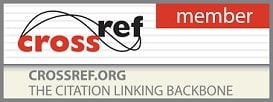- Multidisciplinary Journal
- Printed Journal
- Indexed Journal
- Refereed Journal
- Peer Reviewed Journal
ISSN Print: 2394-7500, ISSN Online: 2394-5869, CODEN: IJARPF
IMPACT FACTOR (RJIF): 8.4
Vol. 1, Issue 5, Part B (2015)
Combined Computational and Chemometric study of Benzothiazole molecule by Semiempirical, Hartree –Fock (HF) and Density Functional Theory (DFT) at different levels of basis sets
Combined Computational and Chemometric study of Benzothiazole molecule by Semiempirical, Hartree –Fock (HF) and Density Functional Theory (DFT) at different levels of basis sets
Author(s)
Abstract
Geometry of benzothiazole optimized at several computational levels: semiempirical methods (SEM), ab initio density functional theory (DFT) with Becke’s three-parameter exchange functional and the gradient corrected functional of Lee, Yang, and Paar (B3LYP) functionals, and Hartree–Fock (HF) with different size of basis sets in gas phase. The bond lengths and mulliken charges were analyzed using principal component analysis (PCA) and hierarchical cluster analysis (HCA). The PCA and HCA results showed that the methods were divided into two groups: best and least methods, where PC1 > 0 for the best methods and PC1 < 0 for the least ones. i.e. semiempirical and DFT methods are best for the benzothiazole molecule for comparing the HF methods expect the HF/STO-3G in the case of bond lengths. From mulliken charges are divided by two groups according to basis sets one is with polarization and diffusion functions and other is no these functions. For the benzothiazole, the best methods are 7 to 10, 12 to 15, 18 to 21 and 23 to 26 from PCA and HCA results.
Geometry of benzothiazole optimized at several computational levels: semiempirical methods (SEM), ab initio density functional theory (DFT) with Becke’s three-parameter exchange functional and the gradient corrected functional of Lee, Yang, and Paar (B3LYP) functionals, and Hartree–Fock (HF) with different size of basis sets in gas phase. The bond lengths and mulliken charges were analyzed using principal component analysis (PCA) and hierarchical cluster analysis (HCA). The PCA and HCA results showed that the methods were divided into two groups: best and least methods, where PC1 > 0 for the best methods and PC1 < 0 for the least ones. i.e. semiempirical and DFT methods are best for the benzothiazole molecule for comparing the HF methods expect the HF/STO-3G in the case of bond lengths. From mulliken charges are divided by two groups according to basis sets one is with polarization and diffusion functions and other is no these functions. For the benzothiazole, the best methods are 7 to 10, 12 to 15, 18 to 21 and 23 to 26 from PCA and HCA results.
Pages: 53-58 | 1311 Views 93 Downloads

How to cite this article:
N. Surendra Babu, G.Y. Sagar. Combined Computational and Chemometric study of Benzothiazole molecule by Semiempirical, Hartree –Fock (HF) and Density Functional Theory (DFT) at different levels of basis sets. Int J Appl Res 2015;1(5):53-58.






 Research Journals
Research Journals